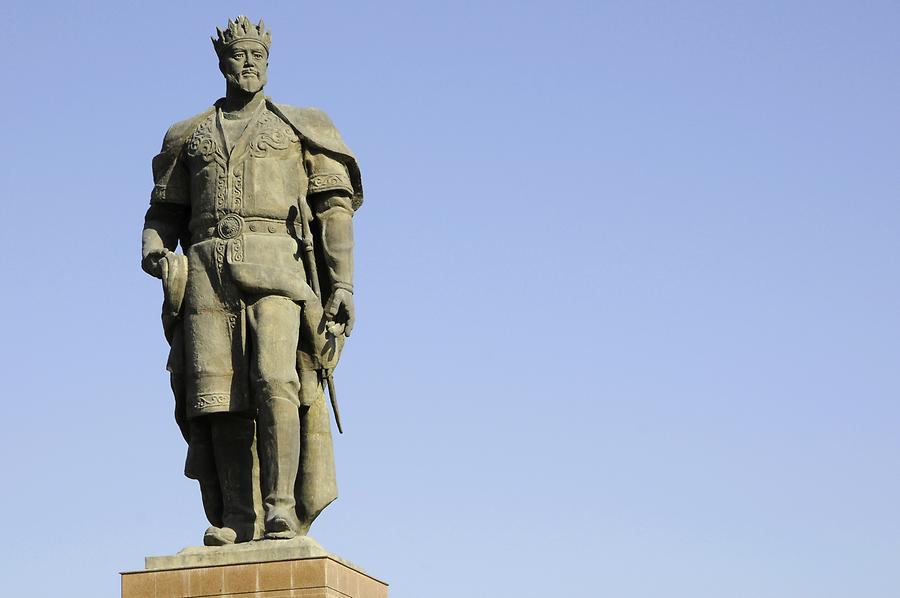Amir Timur#

Amir Timur, October 2008, © Gerhard Huber, under CC BY-NC 4.0 +Edu
The history of the country is difficult to explanation, because for a long time, constantly alternating nomadic peoples from the Siberian steppes dominated the region. Again and again, trading nations came into being and passed away again along the Silk Road. Formative for Uzbekistan were five powerful invaders: at first the Greeks under Alexander the Great, followed by the Persians, the Arabs and the Turks, under whose rule Samarkand
Uzbekistan, Samarkand
and Buchara
Uzbekistan, Bukhara
blossomed into the greatest grandeur - until the commercial metropolises went down during the Mongol invasion. with the decline of the Mongolian empire Uzbekistan's most important period in historical started. In the 14th century, Timur, the offspring of a Mongolian-Turkish nomadic tribe, came into power and constituted the ruling dynasty of the Timurids. Within a short time his dominion extended from Euphrates via Persia to North India, with Samarkand as its glamorous capital. After his death the giant empire collapsed and the period of the Uzbeks began. They, too, were nomadic Turkmen people who came from the steppe and were named after Uzbek, the Khan of the Golden Horde. Soon, however, his empire fell into three territories, the Khanate of Khiva, the Emirate of Bukhara, and the Khanate of Kokand. As of the middle of the nineteenth century, Central Asia came under the influence of the Russian Empire. Uzbekistan did not get its present boundaries until the founding of the Soviet Union.
Die Geschichte des Landes lässt sich nur schwer erzählen, denn für lange Zeit dominierten ständig wechselnde Nomadenvölker aus den sibirischen Steppen die Region. Immer wieder entstanden und vergingen Handelsreiche entlang der Seidenstraße. Nachhaltig prägend für Usbekistan waren fünf mächtige Invasoren: ganz früh die Griechen unter Alexander dem Großen, gefolgt von den Persern, den Arabern und den Türken, unter denen Samarkand
Usbekistan, Samarkand
und Buchara
Usbekistan, Buchara
zu größter Pracht erblühten – bis die Handelsmetropolen im Sturm der Mongolen untergingen. Mit dem Zerfall des mongolischen Riesenreiches begann Usbekistans wichtigstes Geschichtskapitel. Im 14. Jahrhundert gelangte Timur, Spross eines mongolisch-türkischen Nomadenstammes, an die Macht und begründete das Herrschergeschlecht der Timuriden. Innerhalb kurzer Zeit reichte sein Herrschaftsgebiet vom Euphrat über Persien bis Nordindien, mit Samarkand als glanzvoller Hauptstadt. Nach seinem Ableben zerfiel das Riesenreich und die Zeit der Usbeken begann. Auch sie waren ein nomadisierendes Turkvolk, das aus der Steppe kam, benannt nach Usbek, dem Khan der Goldenen Horde. Bald jedoch zerfiel auch sein Reich in drei Herrschaftsgebiete, das Khanat von Chiwa, das Emirat von Buchara und das Khanat von Kokand. Ab Mitte des 19. Jahrhunderts gelangte Zentralasien unter Einfluss des russischen Zarenreiches. Seine heutigen Grenzen erhielt Usbekistan erst mit Gründung der Sowjetunion.